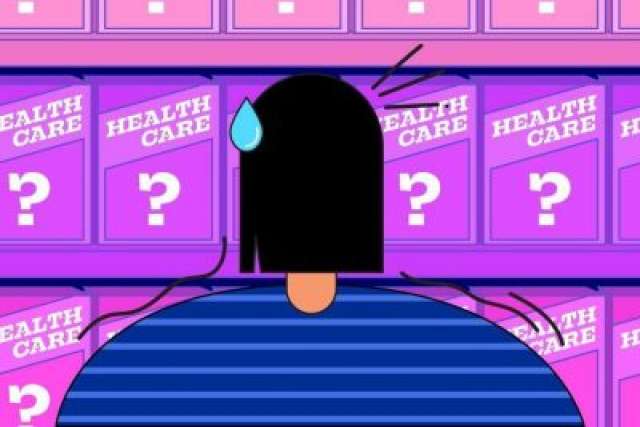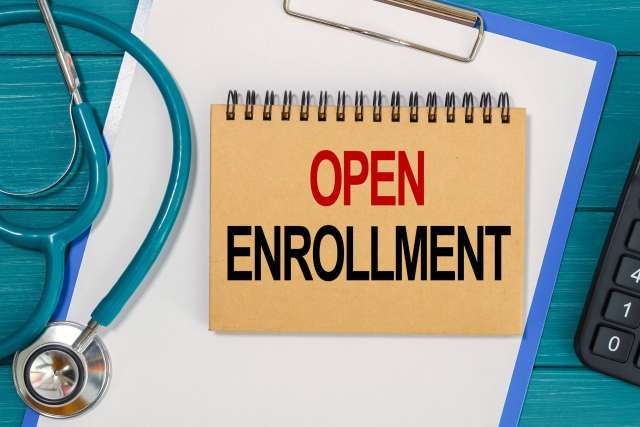If you’re feeling a bit overwhelmed by the open enrollment process — the annual period when you can renew or change your medical insurance coverage — you’re not alone. Selecting insurance can be confusing and time-consuming.
But putting that time and effort into carefully reviewing your health insurance options might save you some money, bring peace of mind and protect you from unexpected financial burdens should a health emergency occur.
Regina D. Green, director of managed care operations for UCLA Medical Group, explains what to consider during open enrollment to make the process more user-friendly.
While it may be tempting to base your insurance choice on monthly premiums alone, it’s worth taking a detailed look at your personal and family health needs and different plan specifics before locking in your coverage for the coming year.
First, the vocabulary
It’s helpful to understand these terms before you begin:
- Coinsurance: The percentage of the cost for services and treatments for which you’re responsible.
- Copay: The amount your insurance charges you for doctor visits, generally a flat fee. It may be $10-$30 (or more) for office visits and up to several hundred dollars for hospital admission.
- Deductible: The amount you must pay for medical services during the calendar year before the insurance company pays.
- HMO: Health Maintenance Organization. With this plan, you pick a primary care physician through whom all your health care services go. Visits to doctors outside the HMO network typically aren’t covered by these plans.
- Network: The set of providers — physicians, specialists, clinics and hospitals — that accept your insurance plan’s coverage.
- Out-of-pocket maximum: The amount you must pay during the calendar year before the plan pays 100% of covered charges. However, what counts toward this annual maximum varies by plan.
- PPO: Preferred Provider Organization. More flexible than an HMO, PPO plans don’t require a primary care doctor and cover access to doctors both in and out of network, though staying in network generally means lower copays and out-of-pocket costs.
- Premium: The monthly fee charged for coverage by your employer or insurance provider.

Factors to consider based on your age
20s to 30s
Once you age out of your parents’ insurance plan at 26, you’re responsible for your own medical coverage. Provided you’re generally healthy, your focus at this age is likely to be on preventive care and treating common illnesses.
Green suggests looking for a primary care physician you’re comfortable with and taking note of the hospital and clinic locations covered by a plan: Are they near your home or workplace?
“You need to consider where and when you are going to want to seek health care,” she says. “Are you the kind of person who’s proactive and schedules appointments? Or are you more the 11th-hour type who’s going to show up at urgent care?”
Young people with children should consider the needs of everyone who will be on their plan. Is there a pediatrician nearby? Do the children have health concerns that might require specialists or prescription medication?
You can access UCLA Health providers through HMO and PPO plans provided by your employer or through Covered California. Go to uclahealth.org/health-plans#ppo for more information. To find out if your insurance is accepted at UCLA Health, call 800-UCLA-MD1 (800-825-2631).
40s to 60s
People in this age range require more preventive exams, such as mammograms and colonoscopies, so consider the locations that offer these services when looking at what’s available in a plan’s network. Because most of this population is still working, often while raising families and caring for older relatives, convenience is key. Green advises taking geography into account so services can be easily coordinated.
"It's no different than buying anything else. When you buy a car, when you buy a refrigerator, whenyou buy a washer-dryer: There are things that are included and things that aren't."
Regina D. Green, director of managed care operations for UCLA Medical Group
This is also a time to pay particular attention to high deductibles and out-of-pocket maximums. An unexpected health event could end up costing thousands, so it might be worth a higher monthly premium in exchange for a lower deductible and out-of-pocket limits. Look closely at the specifics of the various plans being offered to avoid a costly medical bill surprise.
“It’s no different than buying anything else,” Green says. “When you buy a car, when you buy a refrigerator, when you buy a washer-dryer: There are things that are included and things that aren’t.”
You can access UCLA Health providers through HMO and PPO plans provided by your employer or through Covered California. Go to uclahealth.org/health-plans#ppo for more information.
Seniors older than 65
Seniors may have the most to consider when it comes to choosing a health plan. While some seniors continue to work and have coverage through their employer, many are retired and on fixed incomes and more likely to have developed health conditions that require frequent care.
Green recommends people in this age category compare benefit plans based on the services they know they use. They might take inventory of the care they required over the past year to help assess the future year’s potential needs.
There are multiple types of medical plans available to seniors through Medicare. Original Medicare and Medicare Advantage are the two largest. Also think about any prescription medications. Medicare covers prescriptions through its pharmacy drug plans known as “Part D,” but you’ll want to be sure the drug plan you chose covers the medications you take.
Knowing your health conditions and prescription requirements are key, as out-of-pocket costs can vary greatly between plans. For instance, if you regularly show up in the Emergency Department or have required long hospital stays in the past, you want to be sure to factor these concerns into your coverage selection. Plans have different out-of-pocket fees for Emergency Department visits and some plans only cover a portion of the hospital stay.
Added perks are another potentially important consideration. Some plans include travel vouchers for rides to medical offices; others might cover acupuncture or chiropractic care. That’s why it’s important to know your needs and read closely what each plan offers.
UCLA accepts several Medicare plans, including Original Medicare and Medicare Advantage. Visit eHealthMedicare.com/UCLAhealth for more information

More questions? Check out these FAQs
When exactly is open enrollment?
Open enrollment dates vary by employer and insurance provider, but the period is generally in the fall for coverage that begins the following year. For those who purchase insurance through Covered California, the open enrollment period is from Nov. 1 to Jan. 31. Medicare's open enrollment window began Oct. 15 and runs until Dec. 7. Nationally, the open enrollment period goes from Nov. 1 to Jan. 15.
I’m still stumped. Who can help me make sense of all this?
If you get your insurance coverage through your employer, your Human Resources department should be able to help. You can also call your insurance company directly to ask questions.
If you buy your insurance through the marketplace and live in California, start at coveredca.com.
Outside California, go to healthcare.gov and click on “find local help” for information about coverage in your state.
How can I find out exactly what’s covered under my plan?
Look beyond the leaflet you may have been given with a grid offering simple plan comparisons. For detailed information about what is and isn’t covered by your insurance plan, read the Evidence of Coverage. This detailed document is lengthy – usually about 100 pages – but worth the time, both when choosing coverage and as a reference when needs arise. Green advises: “Take notes like you were in class.”
If I miss the open-enrollment period, am I stuck with my current coverage?
Yes, unless you experience a Qualifying Life Event that makes you eligible for a special enrollment period. These events are: loss of existing health coverage through loss of job or aging out of a parent’s plan; change in household such as marriage, divorce or having a child; change in residence, such as moving to a different county; change in income that affects the coverage you qualify for; becoming a U.S. citizen; or leaving incarceration.
More questions? Visit the UCLA Health Open Enrollment page.



